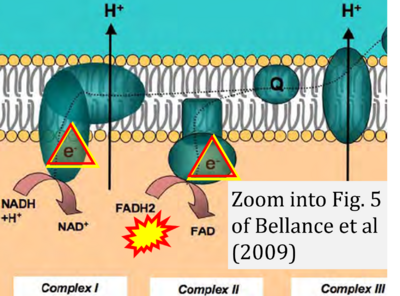Bellance 2009 Front Biosci (Landmark Ed)
| Bellance N, Lestienne P, Rossignol R (2009) Mitochondria: from bioenergetics to the metabolic regulation of carcinogenesis. Front Biosci (Landmark Ed) 14:4015-34. doi: 10.2741/3509 |
Bellance N, Lestienne P, Rossignol R (2009) Front Biosci (Landmark Ed)
Abstract: In this review, we discuss the concept of metabolic remodeling and signaling in tumors, specifically the various metabolites that participate in the regulation of gene expression in cancer cells. In particular, pyruvate, oxaloacetate, succinate and fumarate, four mitochondrial metabolites, activate genes relevant for tumor progression. When the balance between glycolysis and oxidative phosphorylation is altered, these metabolites accumulate in the cytoplasm and regulate the activity of the Hypoxia Inducible Factor 1alpha (HIF-1alpha). HIF is one of the main factors that orchestrate the metabolic switch observed during oncogenesis. There is also an important role for lactate, fructose 1-6 bisphosphate or citrate that leads to the diversion of glucose metabolites to anabolism. In addition reactive oxygen species, which are produced by the respiratory chain, could serve as an endogenous source of DNA-damaging agents to promote genetic instability. Accordingly, several mitochondrial DNA mutations were reported in tumors, and the construction of cybrids recently demonstrated their role in the control of tumor progression.
Labels:
Pathology: Cancer
Enzyme: Complex II;succinate dehydrogenase
Correction: FADH2 and Complex II
- FADH2 is shown as the substrate feeding electrons into Complex II (CII). This is wrong and requires correction - for details see Gnaiger (2024).
- Gnaiger E (2024) Complex II ambiguities ― FADH2 in the electron transfer system. J Biol Chem 300:105470. https://doi.org/10.1016/j.jbc.2023.105470 - »Bioblast link«


